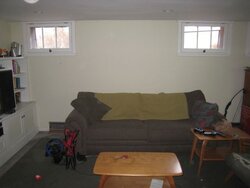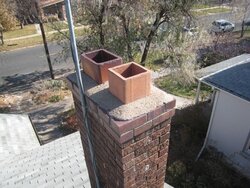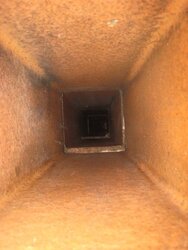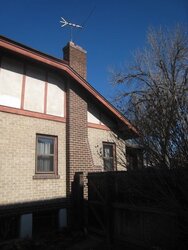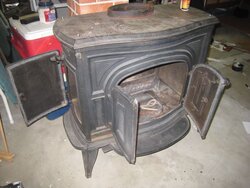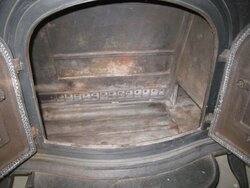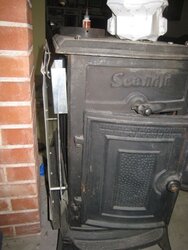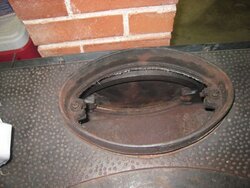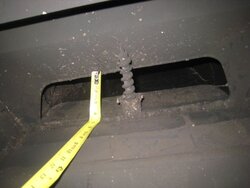bear with me this may get a little long winded. i live in denver colorado in a 1000s/f bungalow with a 1000 s/f mostly finished basement. i want to put a wood stove in the basement primarily for supplementary heating. winters are fairly mild here but we do get weeks of single digit temps now and again during which my boiler is running constantly and it still doesn't get warm enough. of course if running and maintaining the wood stove is not as time consuming as i think it might be i might use it more than i originally intend to.
as the title says i have a question concerning the chimney. i have an outdoor brick chimney with two clay lined flues. one is 6 1/2x10 inch ID going to the main floor fireplace and the other is 6 1/2x6 1/2 ID which went to a fireplace in the basement which i bricked in and then furred out and drywalled over. i originally thought i could line the flue to the basement and tie into that but the outlet on the stove is 8" so even if i could get a 6" liner down that flue it probably wouldn't be a good idea to reduce from the 8" outlet right? i know that lining is always the best thing to do for both performance and safety but could i just tie into the existing 6 1/2x 6 1/2 without a liner even though the square inch cross section of 8" round is still bigger (but not by much) than the 6 1/2 x 6 1/2 clay flue ? if these two options are not good i was thinking about putting the stove somewhere in the middle of the area and just running a pipe up to the roof. the basement ceiling is at 7' and its about 15' from there to the roof penetration. in that scenario would i have to use class a chimney pipe once it went through the basement ceiling into the main floor and then all the way through the roof? and would the piping on the main floor have to be enclosed in a chase? money being a concern, this method would cost well over $1500 just for materials. is there another more economical solution?
thanks in advance
john
as the title says i have a question concerning the chimney. i have an outdoor brick chimney with two clay lined flues. one is 6 1/2x10 inch ID going to the main floor fireplace and the other is 6 1/2x6 1/2 ID which went to a fireplace in the basement which i bricked in and then furred out and drywalled over. i originally thought i could line the flue to the basement and tie into that but the outlet on the stove is 8" so even if i could get a 6" liner down that flue it probably wouldn't be a good idea to reduce from the 8" outlet right? i know that lining is always the best thing to do for both performance and safety but could i just tie into the existing 6 1/2x 6 1/2 without a liner even though the square inch cross section of 8" round is still bigger (but not by much) than the 6 1/2 x 6 1/2 clay flue ? if these two options are not good i was thinking about putting the stove somewhere in the middle of the area and just running a pipe up to the roof. the basement ceiling is at 7' and its about 15' from there to the roof penetration. in that scenario would i have to use class a chimney pipe once it went through the basement ceiling into the main floor and then all the way through the roof? and would the piping on the main floor have to be enclosed in a chase? money being a concern, this method would cost well over $1500 just for materials. is there another more economical solution?
thanks in advance
john


